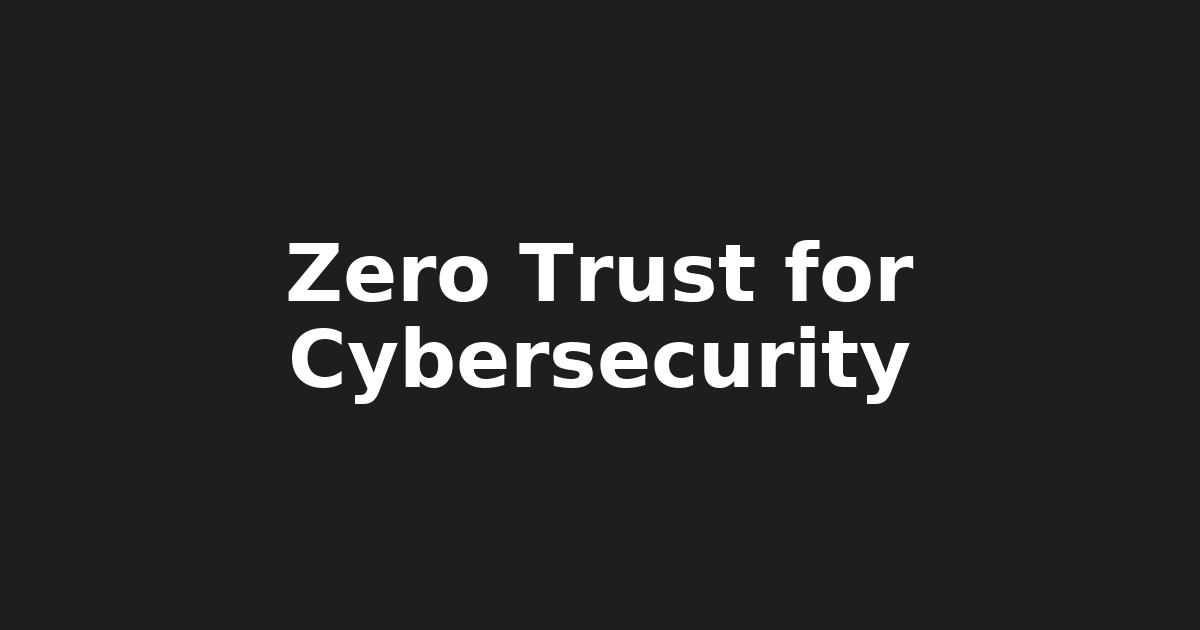Zero-Trust Architecture for Cybersecurity: A Guide

Zero-Trust Architecture for Cybersecurity: A Guide for Developers and System Administrators
===========================================================
As the threat landscape continues to evolve, Zero-Trust architecture has become a top priority for organizations to ensure their networks are secure from both internal and external threats. This trend is particularly relevant to developers, Linux users, system administrators, and IT professionals who need to implement robust security measures to protect their systems and data.
Key Takeaways
1. Shift from Perimeter-Based Security
Traditional perimeter-based security models are no longer effective in today's threat landscape. Zero-Trust architecture focuses on a more secure, user-centric approach.
2. Identity-Based Access Control
Zero-Trust emphasizes the importance of identity-based access control, ensuring that only authorized users and devices have access to sensitive resources.
3. Continuous Monitoring and Validation
Implementing continuous monitoring and validation is crucial in Zero-Trust architectures, allowing for real-time threat detection and response.
Why it's Relevant
1. Increased Cybersecurity Concerns
As more organizations move to the cloud and adopt remote work models, cybersecurity threats are becoming increasingly sophisticated.
2. Growing Importance of Identity-Based Security
With the rise of identity-based security, understanding how to implement Zero-Trust architectures is crucial for developers and system administrators.
Relevant Resources
1. Google's Zero-Trust Initiative
Learn about Google's approach to implementing Zero-Trust architecture in their own systems: https://google.com/zero-trust-initiative
2. OWASP's Zero Trust Architecture Guide
Explore OWASP's comprehensive guide on implementing Zero-Trust architectures, including best practices and security considerations: https://owasp.org/www-project-zero-trust/
Implementing Zero-Trust Architecture
Step 1: Define Your Security Strategy
Identify your organization's security goals and develop a strategy that aligns with your Zero-Trust architecture.
Step 2: Implement Identity-Based Access Control
Use identity-based access control to ensure that only authorized users and devices have access to sensitive resources. Utilize tools like Okta, Microsoft Azure Active Directory, or Google Cloud Identity Platform.
Step 3: Configure Continuous Monitoring and Validation
Implement continuous monitoring and validation to detect and respond to security threats in real-time. Use tools like Splunk, ELK Stack, or AWS WAF.
Best Practices for Implementing Zero-Trust Architecture
- Use Multi-Factor Authentication: Require multiple forms of verification, such as passwords, biometrics, or one-time passes, to ensure that only authorized users access sensitive resources.
- Implement Encryption: Encrypt data in transit and at rest to protect it from unauthorized access.
- Regularly Update Software and Systems: Keep your software and systems up-to-date with the latest security patches and updates.
Conclusion
Zero-Trust architecture is a critical component of modern cybersecurity strategies. By understanding the principles of Zero-Trust architecture and implementing robust security measures, developers, Linux users, system administrators, and IT professionals can protect their systems and data from evolving threats.
Additional Resources
- Zero-Trust Architecture Whitepaper: Download the whitepaper to learn more about the benefits and challenges of implementing a Zero-Trust architecture: https://example.com/zero-trust-whitepaper
- Cybersecurity Podcast: Listen to our cybersecurity podcast, where we discuss the latest trends and best practices in cybersecurity: https://example.com/cybersecurity-podcast
References
- Google. (2022). Zero-Trust Initiative.
- Retrieved from https://google.com/zero-trust-initiative
- OWASP. (2020). Zero Trust Architecture Guide.
- Retrieved from https://owasp.org/www-project-zero-trust/
- Splunk. (2023). Continuous Monitoring and Validation.
- Retrieved from https://splunk.com/continuous-monitoring-validation
